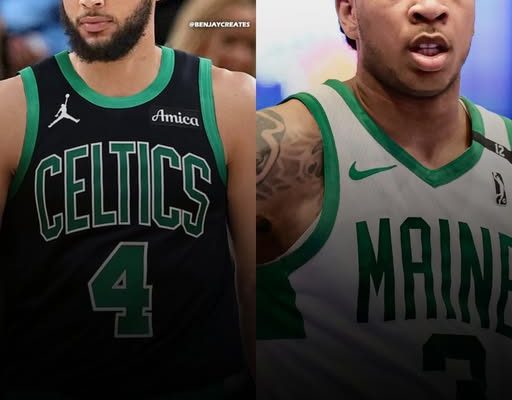The landscape of the Boston Celtics this summer has undeniably shifted, leaving the once-dominant champions in an unfamiliar, albeit intriguing, position. With the devastating news of Jayson Tatum’s Achilles injury sidelining him for what is expected to be the majority, if not the entirety, of the upcoming season, and the departure of key defensive stalwarts like Jrue Holiday and Kristaps Porzingis, the team’s immediate aspirations have necessarily recalibrated. This is not the season for a “win-now” mentality, at least not in the traditional sense. Instead, President of Basketball Operations Brad Stevens appears to be steering the franchise towards a strategic soft reset, a period of re-evaluation and opportunistic acquisitions that prioritize long-term flexibility while still seeking to foster a competitive, development-rich environment.1 It is within this altered context that the sudden and significant interest in Ben Simmons, culminating in the Boston Celtics becoming the betting favorites to land him after the decision to waive JD Davidson, makes a certain kind of calculated sense.
The waiving of JD Davidson, a player who had shown flashes of promise in the G-League and was a recent champion with the main squad, might seem like a minor roster maneuver on the surface. However, in the intricate world of NBA salary caps and roster construction, it’s a telling signal. This move, which reportedly helps the Celtics get back under the second apron of the luxury tax, isn’t just about financial prudence; it’s about creating the necessary flexibility to make other moves. It clears a roster spot and potentially frees up a small amount of cap space, indicating that the Celtics front office is actively exploring avenues to reshape the team. The immediate speculation, amplified by fan reactions on social media, quickly pointed to the potential arrival of Ben Simmons, demonstrating the direct correlation many see between this seemingly minor transaction and a much larger strategic play.
Ben Simmons, a former No. 1 overall pick and three-time All-Star, represents a high-risk, potentially high-reward proposition.2 His career trajectory has been a tumultuous one, marred by offensive struggles, a significant dip in confidence, and persistent injury issues, particularly with his back and more recently, his overall durability. Last season, split between the Brooklyn Nets and Los Angeles Clippers, his statistical output was modest at best: five points, 4.7 rebounds, and 5.6 assists in 51 games.3 These numbers are a stark contrast to his peak years with the Philadelphia 76ers, where he was a dynamic playmaker, elite defender, and consistent triple-double threat. Yet, despite the obvious decline in his offensive game, particularly his well-documented aversion to shooting, the interest from multiple teams, including the Sacramento Kings, Phoenix Suns, and New York Knicks, underscores the unique skill set he still possesses.
For the Boston Celtics, the appeal of Ben Simmons in this transitional period lies precisely in his non-traditional strengths and the lowered expectations surrounding him. With Jayson Tatum out, the pressure to contend for a championship next season has temporarily evaporated. This creates an ideal, low-pressure environment for Simmons to potentially rediscover his game, or at least a significant portion of it. The Celtics are not looking for a savior; they are looking for specific contributions that Simmons, even in his diminished state, can still provide at an elite level.
Primarily, his defensive versatility remains a significant draw. Simmons is a two-time All-Defensive team selection and has consistently shown the ability to guard multiple positions, from quick guards to imposing bigs.4 With Jrue Holiday, a cornerstone defender, no longer on the roster, and the absence of Kristaps Porzingis’s rim protection, the Celtics have a clear void on the defensive end.5 Simmons’s ability to switch seamlessly, disrupt passing lanes, and rebound from the guard position could immediately bolster a defense that is facing significant retooling. Furthermore, his exceptional playmaking and passing abilities, even without a scoring threat, could inject much-needed facilitation into an offense that will inevitably struggle without Tatum’s primary creation. He can push the pace in transition, find open shooters, and operate as a de facto point-forward, taking some of the ball-handling burden off of Derrick White and newly acquired Anfernee Simons (who himself is a re-trade candidate, further complicating Boston’s backcourt).
The concept of a “prove-it” deal for Simmons makes immense sense for both parties. For Boston, it minimizes financial risk and offers an opportunity to evaluate if Simmons can regain any semblance of his former self in a new, less-demanding system. For Simmons, it provides a crucial platform to rebuild his value away from the intense spotlight and pressure of championship contention. The Celtics’ current situation allows them to offer him significant minutes and a defined role focused on his strengths – defense, facilitating, and rebounding – without asking him to be a primary scorer. This could be the runway he needs to regain confidence and re-establish himself as a valuable NBA player. The mentorship of established veterans and the disciplined culture that Brad Stevens has instilled could also play a crucial role in his rehabilitation.
However, the acquisition of Simmons is not without its considerable risks. The concerns surrounding his mental fortitude, his past unwillingness to shoot even wide-open shots, and his persistent injury woes are legitimate and well-documented. NBA insider Matt Vautour has even urged the Celtics to steer clear, citing past behavior with the 76ers and the general unpredictability of his availability and performance.6 Former teammate Georges Niang’s blunt comments about Simmons’s attitude during his time in Philadelphia highlight the potential for locker room disruption. The Celtics would be taking a chance on a player whose mental and physical state has been an open question for years. There’s also the fundamental question of how a player with no discernible jump shot fits into Joe Mazzulla’s “Mazzulla Ball” philosophy, which typically emphasizes shooting and spacing. While the team composition will undoubtedly change without Tatum, a non-shooting offensive hub could still present significant challenges for offensive flow and efficiency.
Despite these valid concerns, the betting odds, with Boston listed as favorites to sign him, reflect a growing sentiment that this move aligns with the Celtics’ current strategic pivot. The roster, as it stands, is in flux. Beyond Jaylen Brown and Derrick White as surefire starters, the rest of the rotation, particularly at power forward and center, is expected to be filled by committee. This creates a wide-open opportunity for Simmons to carve out a significant role, potentially even a starting one, where his defensive prowess and playmaking could be maximized. The market for Simmons is heating up, with a decision expected within the next week. The Celtics, having made the necessary financial adjustments by waiving Davidson, appear ready to make their push.
Ultimately, the Ben Simmons sweepstakes for the Boston Celtics represents a calculated gamble in a season of recalibrated expectations. It’s a low-cost, potentially high-reward proposition that aligns with a “gap year” strategy. If Simmons can stay healthy and embrace a role focused on his defensive and playmaking strengths, unburdened by the pressure to be a primary scorer, this move could prove to be a quiet success, potentially even setting the stage for a more impactful return to contention when Jayson Tatum is back on the court. However, if his physical and mental struggles persist, the Celtics will have taken a modest financial hit and used a roster spot on a player who failed to deliver, but in a season where championship aspirations are tempered, such a risk is arguably worth taking for a chance at unlocking a once-elite talent. The move to waive JD Davidson, while seemingly minor, underscores the active and opportunistic approach the Celtics are taking as they navigate this challenging but potentially transformative offseason.



